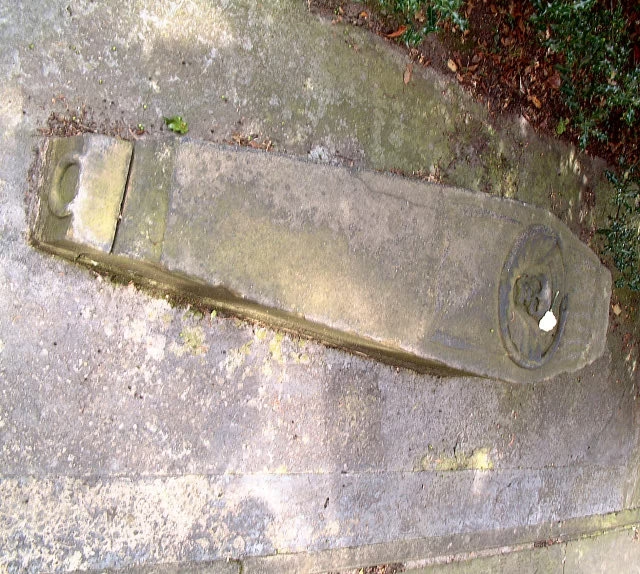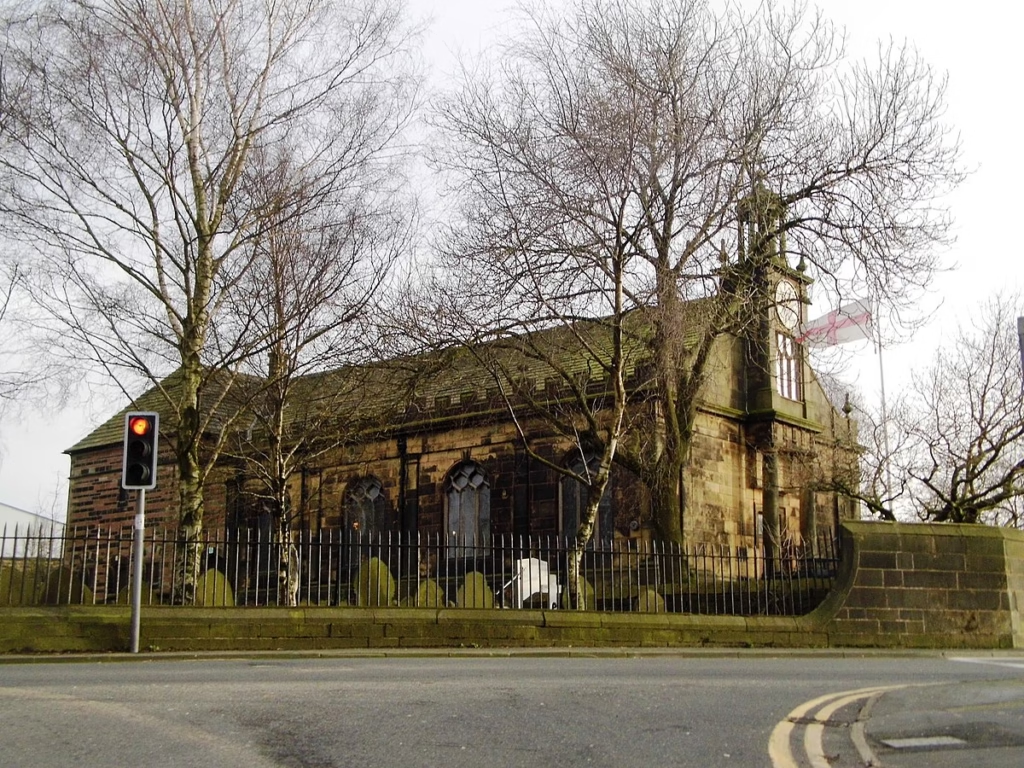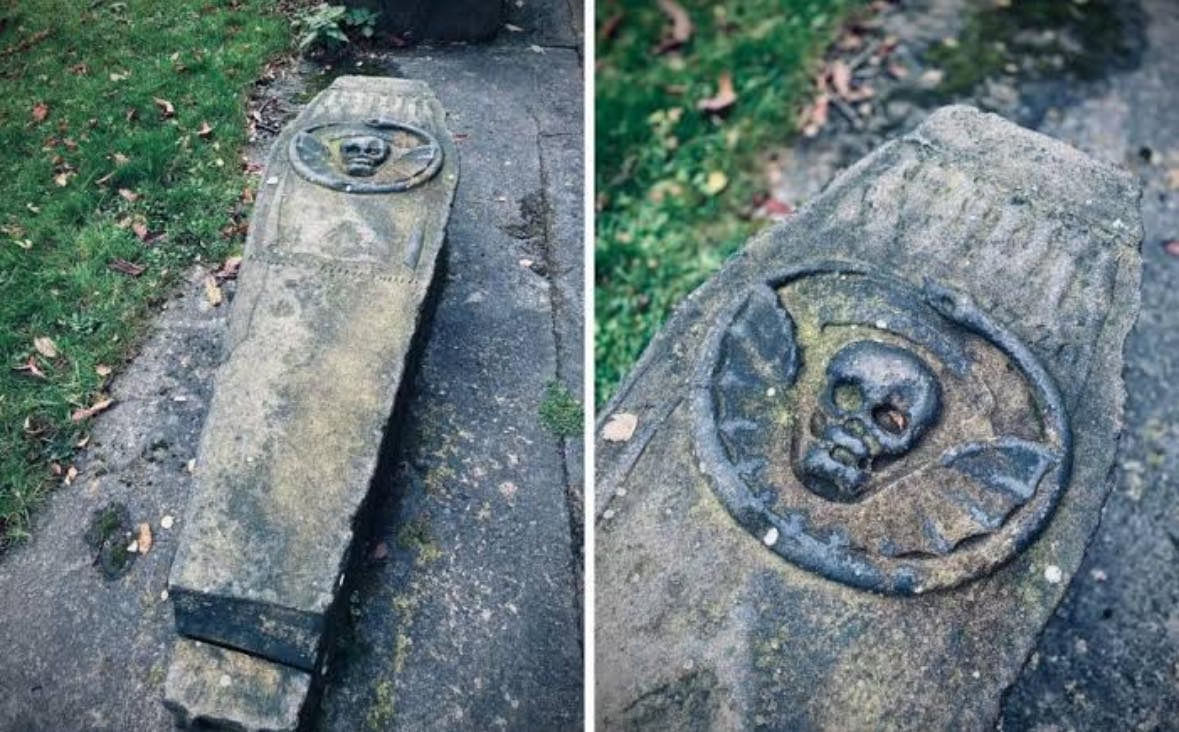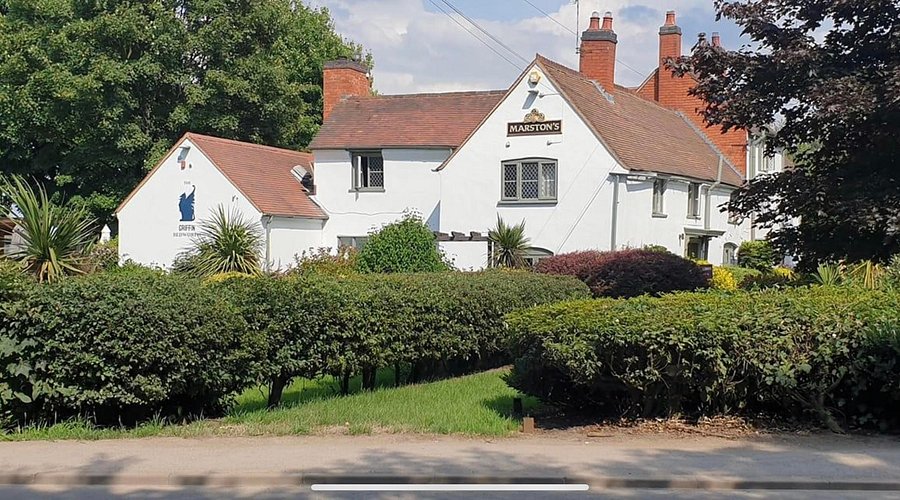High on a windswept hill in the quiet village of Billinge, not far from St Helens and Wigan, there stands an old church that seems to keep a careful watch over the landscape below. St Aidan’s Church has been part of this land since the early 1700s, its stone walls weathered by centuries of storms, its graveyard lined with crooked headstones that whisper tales of love, loss, and—some say—darkness.
But among those graves, one in particular draws curious visitors and brave souls. Locals call it The Vampire’s Grave.

It sits in plain sight within the churchyard, a heavy stone coffin carved into the earth, the names George and Kitty Smith etched into its surface. At first glance, it seems like nothing more than a loving memorial to a long-gone couple, their resting place a testament to devotion that outlasted life itself. But look closer, and you’ll see why this grave has become the heart of one of Lancashire’s most chilling legends.
The coffin’s lid bears a strange and unsettling carving. A skull sits proudly at the centre, flanked on either side by a pair of wings that could easily be mistaken for those of a bat. Winding around the entire design is the tail of a serpent biting its own body—the ancient symbol known as the Ouroboros, representing eternity and the never-ending cycle of life and death. To some, this is no innocent carving. To some, it is the unmistakable mark of the undead.

According to local folklore, the story begins with George Smith, a working man who spent his days on Billinge Hill—known locally as Billinge Lump—a high mound rumoured to hide more than one secret beneath its grassy slopes. One fateful day, as the tale goes, George was bitten by a snake while working on the hill. The venom coursed through his veins, and he died soon after. His wife Kitty was said to be so heartbroken by his death that she couldn’t go on without him. Not long after his burial, she too passed away, her grief taking her to the same resting place as her beloved husband.
The villagers decided to open George’s coffin and place Kitty inside so they could be together for all eternity. But that’s when the whispers began.
Strange things, they said, began to happen around the churchyard. The air felt colder near the stone coffin. Animals refused to go near it. And some claimed that on certain moonless nights, a shadowy figure could be seen moving between the gravestones, tall and gaunt, with eyes that gleamed faintly red in the dark.
Was it grief-stricken imagination? Or had George returned, cursed by the serpent’s venom that stole his life, his body never truly at rest? The villagers began to fear the grave, and over time, the legend of The Vampire of Billinge was born.

Of course, the rational explanation is far less sinister. In truth, the skull and wings carved into the tomb are common symbols from 18th-century gravestones, reminders that death comes for us all but the soul ascends to heaven. The serpent, far from a mark of evil, was a symbol of eternity—of love unbroken by death. Still, it’s easy to see how, in the flicker of a lantern’s light or beneath a cold October moon, that symbolism could take on a more macabre meaning.
The church itself adds to the atmosphere. St Aidan’s stands proud and silent, a monument of stone and faith built atop the village’s highest ground. It was extended in the early 1900s to welcome more worshippers, yet its graveyard feels untouched by time. The old stones lean at odd angles, moss creeping over inscriptions, and the wind that whips through the yew trees carries a strange echo—as though the place remembers.
And across the road, another piece of Billinge’s haunted history waits. The Stork Inn, a cosy pub today, sits on the site of what was once Tower Prison, built in the 1640s. During the Civil War, prisoners were held—and often died—beneath its cold stone floors. When the prison was torn down in 1752 to make way for the inn, the builders left much of the original structure beneath the new foundations. It’s said that the old prison cells still lie below the pub, dark and undisturbed, their history sealed away like the vampire’s tomb across the road.
If you ever find yourself in Billinge, stand before the grave of George and Kitty Smith and take a moment to trace your fingers along the cold stone. Feel the weight of the years, the whispers of the past, and decide for yourself what you believe.
Perhaps it’s just an ordinary grave for a loving couple who couldn’t bear to be apart. Or perhaps it’s something else entirely—a secret buried under centuries of superstition and soil.
When the sun sets and the mists roll across the hill, St Aidan’s becomes a place caught between worlds: the living, the dead, and the legends that refuse to sleep.
And if you happen to glance toward that stone coffin at just the right moment, you might notice a flicker of movement—a trick of the light, perhaps, or the restless stir of something long thought gone.
Because in Billinge, they say, even the dead might not rest forever.
Written by Lauren Campbell, Hauntic.com Contributor | If you love haunted tales and paranormal mysteries, please do follow Hauntic on Facebook and subscribe to our Youtube channel.



